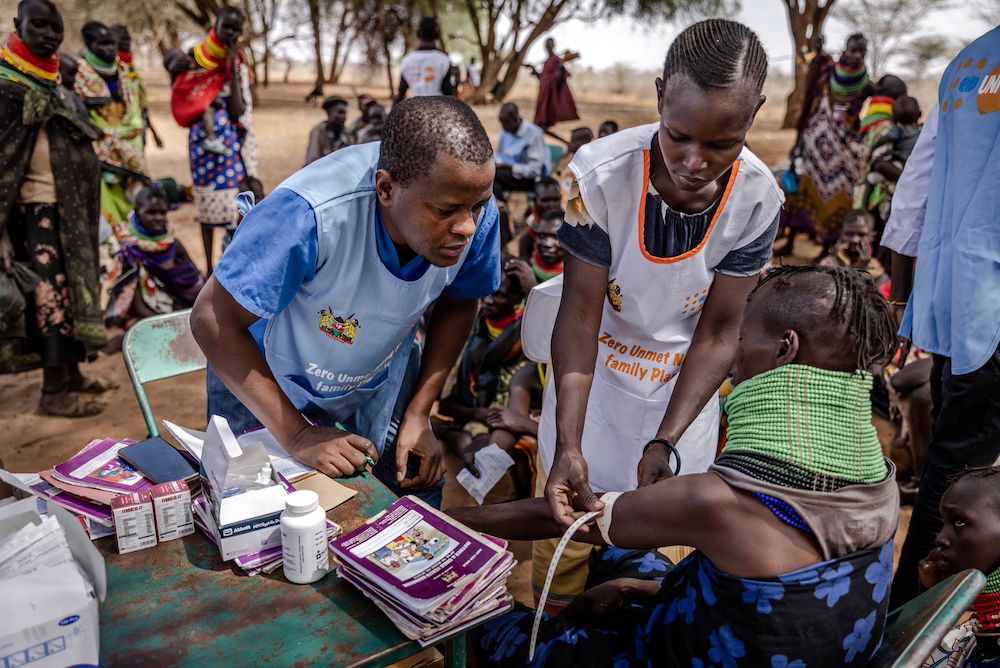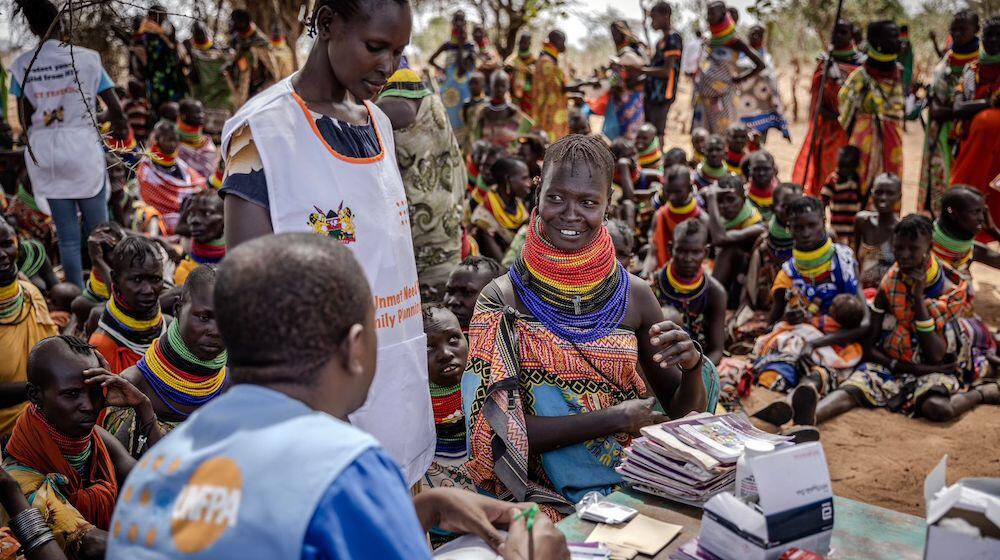TURKANA COUNTY, Kenya – “I have never experienced a drought as bad as this in my life,” 28-year-old Akure Ewar told UNFPA. Seven months pregnant, she complains that she is hungry and often feels dizzy when going about her day. “The dry seasons have been getting worse over the past three years, but our animals kept us going with milk and meat. This time, they have all perished and left us with nothing.”
Kenya is in the midst of its worst drought in 40 years, following four successive failed rainy seasons. More than 4.3 million people are in need of humanitarian assistance, among them 134,000 pregnant or breastfeeding women, who are reported to be acutely malnourished and in need of treatment. Forced to migrate in search of water, food and pasture, many are unable to access health facilities for critical maternal health care.
“Before the drought, our health facilities would record an average of 411 deliveries in a month, indicating a skilled birth attendance rate of 70 per cent,” said Maiyo Elphas, a Loima Sub-county public health officer. “In November 2022, the number was down to 100 births recorded, which represents a very low rate of 25 per cent.”
With my husband often gone in search of pasture, I have to be ready to fend for myself if need be.
Pregnant women fending for themselves
“Every woman, rich or poor, has a 15 per cent risk of complications around the time of delivery, but almost no maternal deaths occur in developed regions,” the World Health Organization states. This indicates the importance of skilled birth attendance, meaning a childbirth assisted by a trained health professional, such as a doctor, nurse or midwife.
The rate of skilled birth attendance was already low in Kenya, a country with a high maternal death rate of 342 per 100,000 live births. But the situation is worsening for those affected by drought.
In Lochorepetet Village, Losikiria Kuya, 30, often goes for days without food. The mother of three is pregnant with her fourth child, and is unable to trek the 10 kilometres to the nearest health centre for her ante-natal check-ups.
“Usually, when it is time to deliver, my husband will take me to the centre on a motorbike, but with him often gone in search of pasture, I have to be ready to fend for myself if need be,” she said.

Bringing care to rural women
The drought crisis is not only affecting women’s access to essential maternal health care. It is causing serious undernutrition among pregnant women, escalating the risk to them and their babies. In addition to affecting the development of a fetus, undernutrition causes a number of problems for pregnant women, including higher risk of sepsis and death.
UNFPA and partners – including the Kenya Red Cross, International Rescue Committee and county health management teams – are providing life-saving sexual and reproductive health services through outreach efforts that bring services closer to those who need them most.
We have been carrying out health outreach activities every two weeks where we offer ante-natal and postnatal services, family planning, nutrition and immunization services to the community.
“During the drought season, we have been carrying out health outreach activities every two weeks where we offer ante-natal and postnatal services, family planning, nutrition and immunization services to the community,” said Nurse Dedan Njagi, from Lobei Health Centre.
An estimated 15 to 20 pregnant women receive care during each outreach visit. Community health volunteers – the backbone of the outreach teams – are also tasked with keeping track of the women to ensure that they deliver at a health facility in the care of a skilled attendant.
Worries on the horizon
The severity and exceptional duration of the drought is worsening an already dire situation in Turkana County, already reeling from locust infestations and the COVID-19 pandemic. Projections indicate the possibility of a sixth consecutive poor rainy season from March to May 2023, placing even more women and girls at risk.
UNFPA is appealing for $113.7 million for its Response Plan for the Horn of Africa Drought Crisis 2022-2023 to respond to women’s and girls’ escalating needs.



